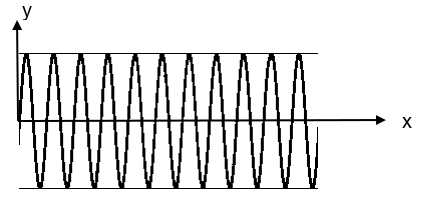Question
Question: A wave is represented as \[\varepsilon =10\sin ({{10}^{8}}+6\sin 1250t)\]. Then the modulating index...
A wave is represented as ε=10sin(108+6sin1250t). Then the modulating index is –
A) 10
B) 1250
C) 1000
D) 6
Solution
The modulating index is the ratio of the amplitude of the modulating wave to the amplitude of the carrier wave. We can find the amplitudes of both these waves very easily from the given wave equation which is the resultant wave after modulation.
Complete answer:
We know that most of the signals which we come across today are modulated to avoid the loss of the signal during its propagation through the large noisy atmosphere. The speciality of modulation is that the modulated wave or the signal which is to be carried from one place to another does not lose its identity when it is modulated with the carrier wave.
We can see a wave which is to be modulated as –

The equation of the wave is –
ym=amsin(2πfmt) –(1)
The carrier wave is given as –

The equation of the wave is –
yc=acsin(2πfct) –(2)
From (1) and (2), we can derive the equation of the amplitude modulated wave as –
